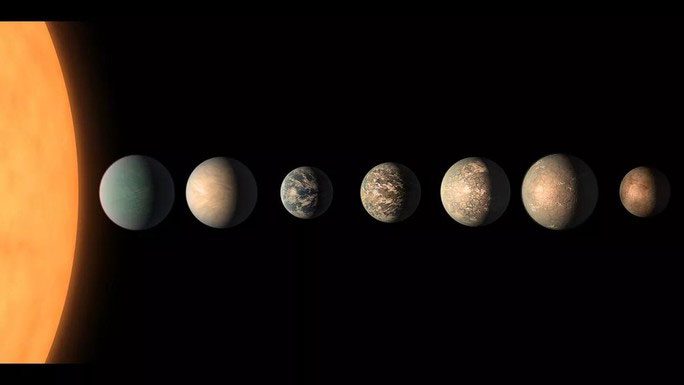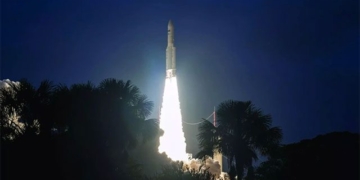The seven TRAPPIST-1 planets have long been the center of an ongoing debate, as scientists express concerns that various factors from the parent star and the planets’ own characteristics could hinder their habitability.
A recently published study in the prestigious scientific journal Nature, led by astronomer Franck Selsis from the University of Bordeaux (France), has brought some great news.

Seven “promised lands” for life around the TRAPPIST-1 star – (Photo: NASA).
TRAPPIST-1 is a red dwarf star, significantly smaller and cooler than the Sun, located just 40 light-years away from us. Its seven planets—each with relatively distinct sizes and forms—share several characteristics with Earth and are conducive to supporting life.
What catches scientists’ attention the most is that all seven planets have a considerable likelihood of containing liquid water on their surfaces or within.
However, several obstacles have been raised. The peculiar nature of some of the “oceanic planets” among them has made some scientists “uneasy,” fearing that having too much water compared to Earth could harm life.
The greatest concern remains the parent star: while red dwarfs are cooler, they emit intense radiation, and powerful stellar winds could cause atmospheric water to evaporate into space, turning these planets into replicas of Venus instead of Earth.
However, Dr. Selsis notes that red dwarfs like TRAPPIST-1 will decrease in brightness over time.
The model developed by him and his team indicates that the young TRAPPIST-1 initially created “hellish” conditions for its seven planets, but as a red dwarf, it would not be hot enough to melt the crust and mantle of these magma planets.
This means that a significant amount of water may still be trapped in the rocks. In other words, the fact that most of these planets are more water-rich than Earth inadvertently provides an advantage.
In the years following the cooling of the parent star, liquid oceans may have formed, which could currently harbor abundant life.
According to Space, this discovery not only boosts confidence in the seven “promised lands” that have intrigued astronomers for some time but also significantly increases the chances for humanity to prove that we are not alone in the Milky Way Galaxy.
This is because red dwarfs like TRAPPIST-1 are the most common type of star in the Milky Way, the galaxy that contains our Earth.




















































